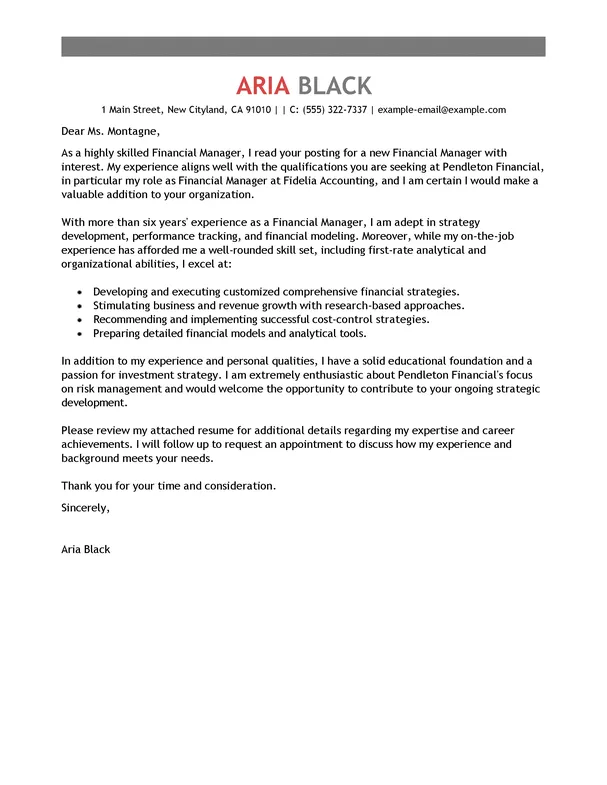A cover letter is a crucial document that accompanies your resume when applying for a job. It serves as your personal introduction to a potential employer, offering an opportunity to elaborate on your qualifications, express your interest in the role, and highlight why you are the ideal candidate. Unlike a resume, which provides a concise overview of your experience and skills, a cover letter allows you to tell your story and demonstrate your personality, making a lasting impression on the hiring manager. Using ResumeHelp’s Cover Letter Guide, you can create a compelling cover letter that grabs the recruiter’s attention. The key is to showcase your unique value and align your aspirations with the company’s needs.
What is a Cover Letter?
A cover letter is a formal business document that serves as an introduction to your resume. It provides the employer with additional context about your qualifications, experience, and interest in the specific job opportunity. This letter allows you to explain why you’re a good fit for the role, going beyond the basic information presented in your resume. Its purpose is to persuade the hiring manager to read your resume and consider you for an interview. A well-crafted cover letter can significantly increase your chances of getting noticed by employers. This guide, brought to you by ResumeHelp, will help you understand and prepare cover letters that work!
Why Cover Letters Matter
Cover letters remain a vital component of any job application. They allow you to personalize your application and connect with the hiring manager on a deeper level. While resumes provide a snapshot of your skills and experience, cover letters provide you with an opportunity to showcase your personality, passion for the role, and enthusiasm for the company. They also give you space to address any gaps in your employment history or explain career transitions. Cover letters provide context and help you stand out from the crowd. By using a cover letter, you demonstrate your communication skills and your willingness to go the extra mile. Recruiters appreciate the initiative and effort that a cover letter demonstrates.
Cover Letter Benefits
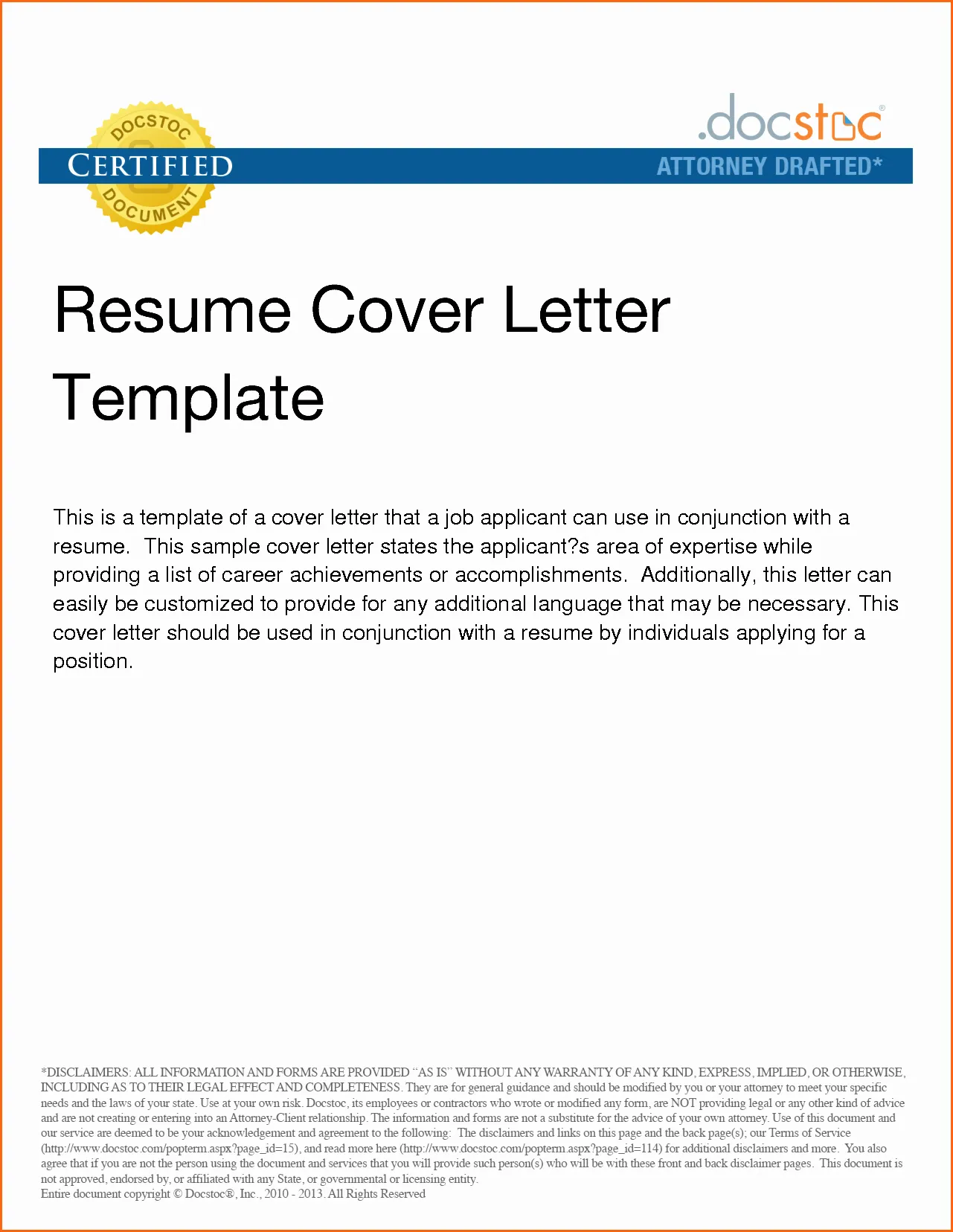
Cover letters offer several key benefits in your job search. They enable you to tailor your application to each specific job, highlighting the skills and experiences that align with the employer’s needs. This targeted approach demonstrates that you’ve taken the time to understand the role and the company. Moreover, cover letters give you the flexibility to address any potential concerns or explain unusual circumstances in your employment history, providing context that a resume might not offer. By showcasing your communication skills, cover letters allow you to create a positive first impression and build rapport with the hiring manager. Finally, a well-written cover letter increases your chances of getting your resume noticed. ResumeHelp can provide great tips to follow to get these benefits.
Cover Letter Structure
A well-structured cover letter follows a clear and organized format. This structure ensures that your message is easy to read, and that the key points are easily identified by the reader. The essential elements of a cover letter include a header with your contact information, a professional salutation, a compelling introduction, body paragraphs to highlight your skills and experience, a strong closing with a call to action, and a professional signature. This structure ensures that the hiring manager can quickly grasp your qualifications and understand why you’re a great fit for the role. Following a standard structure demonstrates your professionalism and attention to detail, increasing your chances of success. ResumeHelp’s guide provides a detailed breakdown of each section.
Header
The header of your cover letter should include your contact information: your name, phone number, email address, and optionally, your LinkedIn profile URL. This information should be clearly displayed at the top of the page, making it easy for the employer to reach you. Use a consistent font and font size that matches the rest of the letter. Ensure the header is well-formatted and visually appealing. It should be professional and uncluttered. Accuracy is crucial in this section, so double-check all contact details before submitting your application. The header ensures that your contact information is readily available when a recruiter wants to reach you after reviewing your application.
Contact Information
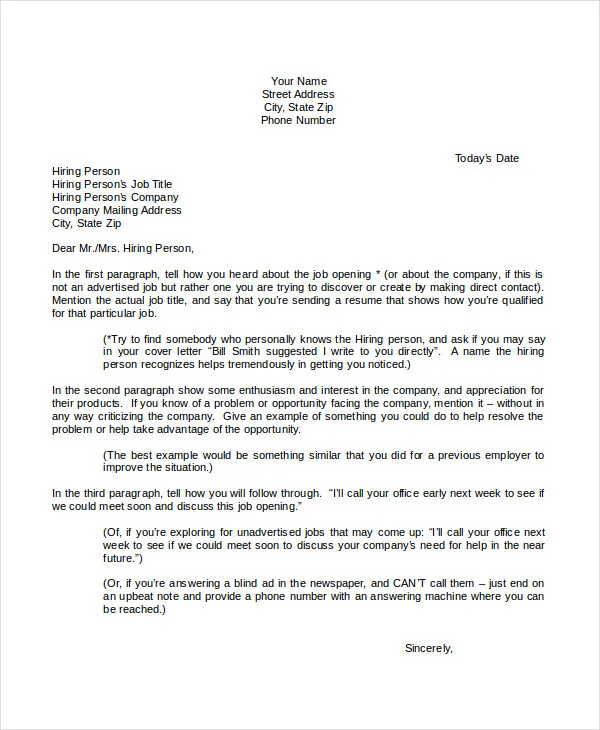
Your contact information should include your full name, professional email address, and phone number. Make sure your email address is professional; avoid using informal or outdated usernames. Your phone number should be current and active, so that you don’t miss important communications regarding your application. It is best to include a link to your LinkedIn profile as well, to provide the recruiter a broader view of your professional background. Ensuring your contact information is accurate, updated, and easily accessible is paramount. This crucial information allows the employer to swiftly and easily reach you if they choose to move forward with your application. Remember, professionalism starts with your contact information.
Date
The date on your cover letter should be the date you are submitting your application. This is usually placed directly below your contact information or to the left or right of the recipient’s information. Consistency in formatting is key; maintain the same font style and size. The date adds a sense of currency and accuracy to your application, providing a quick reference for when the letter was written. Make sure the date is easy to read and clearly visible. Using the current date also shows that your application is up-to-date and relevant. This simple step keeps your application professional and well-organized, leaving a positive impression with the hiring manager.
Recipient’s Information
Always include the recipient’s information, if possible. Start with the hiring manager’s name, their title, the company’s name, and the company’s address. Researching the hiring manager’s name shows you’ve taken the time to personalize your application, which is appreciated by the recipient. If you can’t find a specific name, use a professional salutation such as “Dear Hiring Manager.” Including the recipient’s information demonstrates your attention to detail and your commitment to tailoring your application. It reflects your effort to make a genuine connection with the employer. ResumeHelp emphasizes the importance of this step.
Salutation
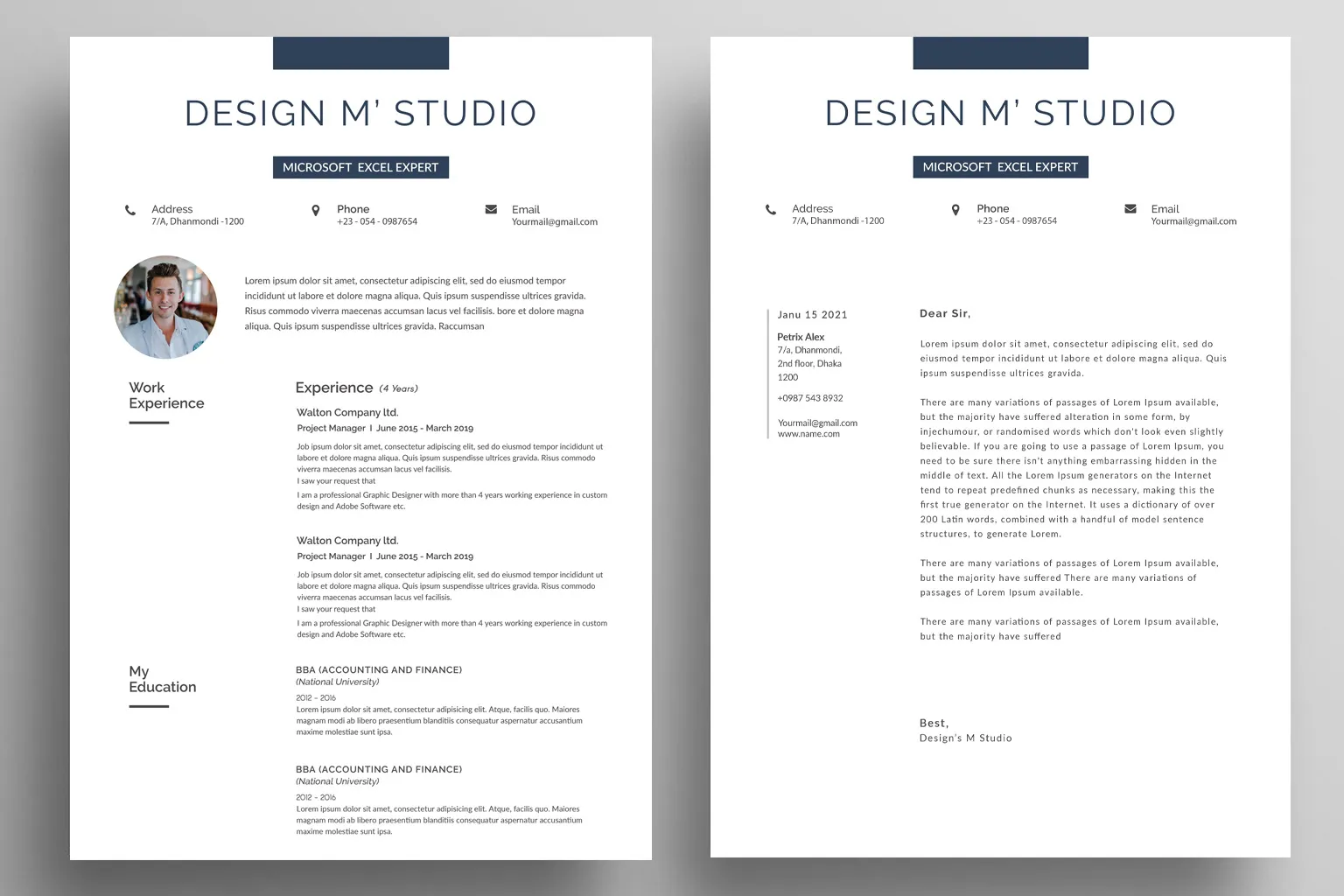
Start your cover letter with a professional salutation. The best approach is to use the hiring manager’s name, such as “Dear Mr. Smith.” If you can’t find a name, use a general salutation, such as “Dear Hiring Manager” or “Dear [Company Name] Hiring Team.” Avoid overly casual greetings, such as “Hey” or “Hi.” The salutation sets the tone for your letter and establishes a respectful and professional interaction from the very beginning. It demonstrates your attention to detail and your ability to communicate formally. Choosing the right salutation is essential in creating a positive first impression and grabbing the reader’s attention.
Body Paragraphs
The body paragraphs are the heart of your cover letter, where you showcase your qualifications, experience, and interest in the job. Structure your body paragraphs logically, with each paragraph focusing on a specific aspect of your qualifications or the role. Use the first paragraph to introduce yourself and state the position you’re applying for. The second paragraph should highlight your relevant skills and experience, providing specific examples and quantifying your achievements. The third paragraph can be used to express your enthusiasm for the company and explain why you’re a good fit. Each paragraph should be concise, well-written, and tailored to the job description. ResumeHelp advises to keep the body paragraphs focused on the value you bring.
First Paragraph
The first paragraph of your cover letter is crucial as it’s your first chance to capture the hiring manager’s attention. Start by stating the position you’re applying for and where you saw the job posting. Then, briefly introduce yourself and highlight your key qualifications that align with the job requirements. Express your enthusiasm for the role and the company, making it clear why you’re interested in this specific opportunity. The first paragraph should be concise, engaging, and tailored to the job description, showing the reader you’ve done your research. The goal is to immediately grab the reader’s interest and entice them to read the rest of your letter. It sets the stage for the following paragraphs where you’ll elaborate on your qualifications and experiences.
Second Paragraph
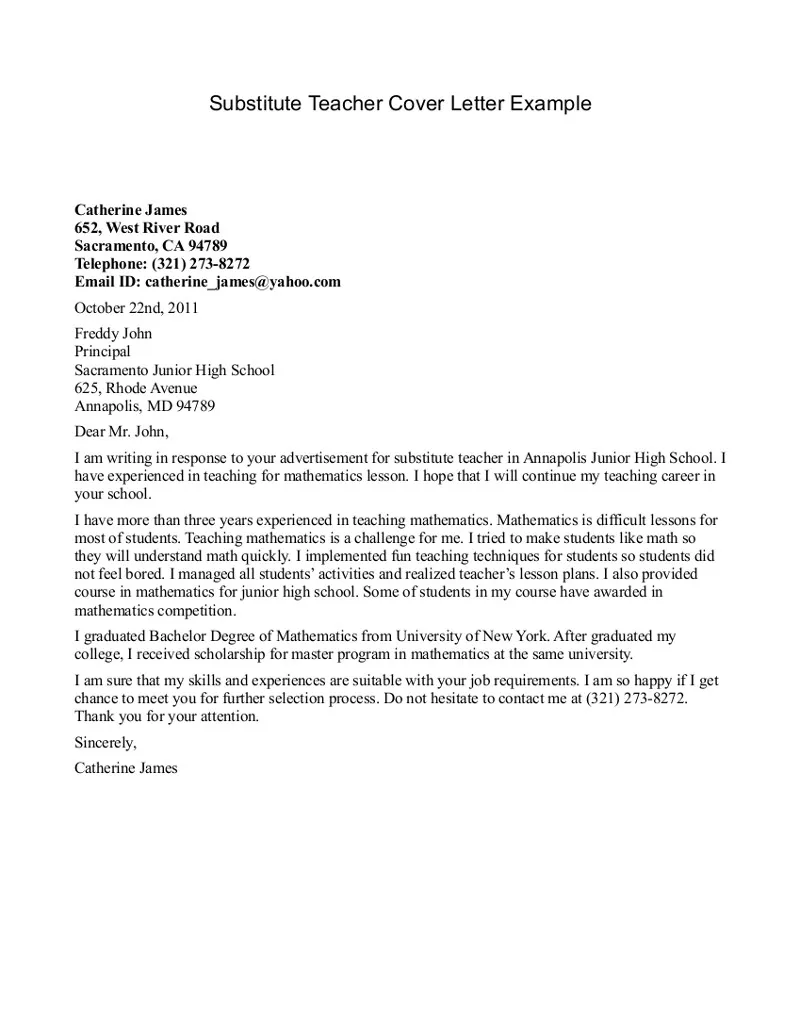
The second paragraph is where you provide the most detail regarding your skills and experience. Highlight the most relevant aspects of your background that align with the job requirements. Use specific examples to demonstrate your achievements and quantify them whenever possible. For instance, instead of saying “managed projects,” say “managed projects, resulting in a 15% increase in efficiency.” Tailor this paragraph to match the requirements of the job description. Show the employer how your skills and experience directly benefit their company. This is your chance to make a compelling case for why you are a great fit for the role. This paragraph provides the main evidence in favor of your application.
Third Paragraph
In the third paragraph, express your enthusiasm for the company and the specific role. Explain why you’re interested in the organization and how your goals align with theirs. Mention specific aspects of the company or job that excite you. Demonstrating genuine interest can make a significant impression on the hiring manager. You may briefly explain what you hope to achieve in the role, and how you believe your skills and experience can contribute to the company’s success. End with a clear statement about your desire for an interview and your willingness to discuss your qualifications in further detail. This paragraph is your opportunity to express your passion and show that you’re a great fit for the culture.
Closing
The closing of your cover letter should be professional and leave a lasting positive impression. Use a complimentary close, such as “Sincerely” or “Best regards.” In the closing, re-iterate your enthusiasm for the position and include a call to action. Specifically, you should express your interest in an interview and thank the hiring manager for their time and consideration. Ensure the tone is polite and respectful. The closing is a final chance to make a strong impression and to reinforce your interest in the role. A well-crafted closing shows professionalism and leaves the hiring manager with a positive feeling about you and your application. ResumeHelp guides you through the proper phrasing to close your letter.
Complimentary Close
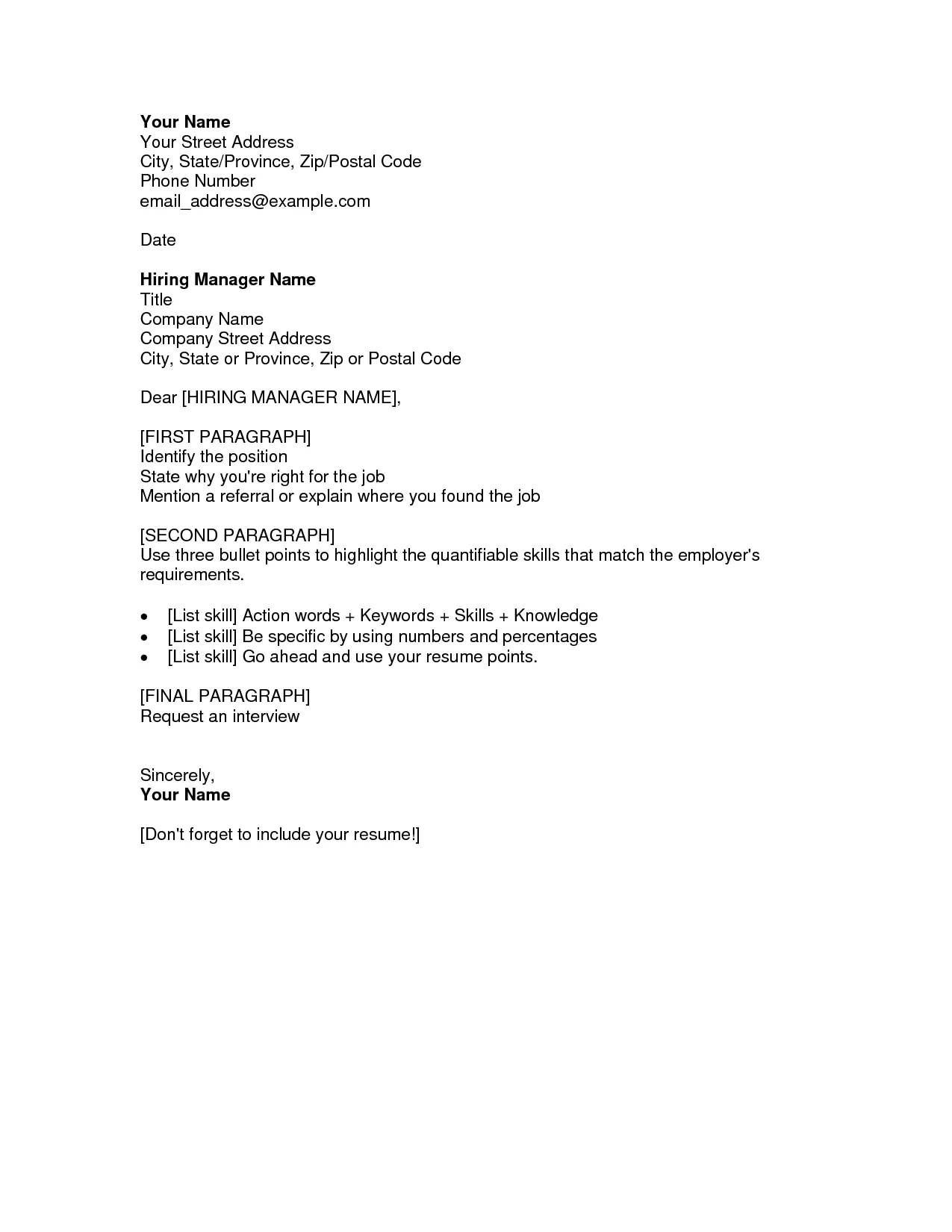
The complimentary close should be a brief, professional phrase that formally ends your cover letter. Use phrases such as “Sincerely,” “Best regards,” “Thank you for your consideration,” or “Respectfully.” Avoid overly casual closings like “Thanks” or “Cheers,” especially in formal business settings. The complimentary close should align with the tone and style of your letter, reflecting a professional and courteous demeanor. Choose a closing that feels natural and appropriate for the industry and company culture. A well-chosen complimentary close is a final touch that reinforces your professionalism. ResumeHelp’s templates help you choose the appropriate closing.
Signature
Your signature should appear below the complimentary close. If you’re sending a digital cover letter, type your full name. If you’re sending a physical letter, sign your name in blue or black ink above your typed name. The signature is the final element of your cover letter and confirms your identity. Ensure your signature is clear and easy to read. Maintain consistency in your formatting; the signature should match the font and size used throughout the letter. The signature adds a personal touch, confirming the letter is authentic. ResumeHelp can help with examples and tips to polish your signature.
Cover Letter Formatting
Proper formatting is crucial for a professional-looking cover letter. This includes choosing a readable font, maintaining consistent margins and spacing, and keeping your letter concise. The goal is to make your letter easy to read and visually appealing. Poor formatting can detract from your message and make a negative impression on the hiring manager. Adhering to these guidelines will ensure your cover letter reflects professionalism and attention to detail. ResumeHelp recommends using clear and appropriate formatting.
Font and Font Size
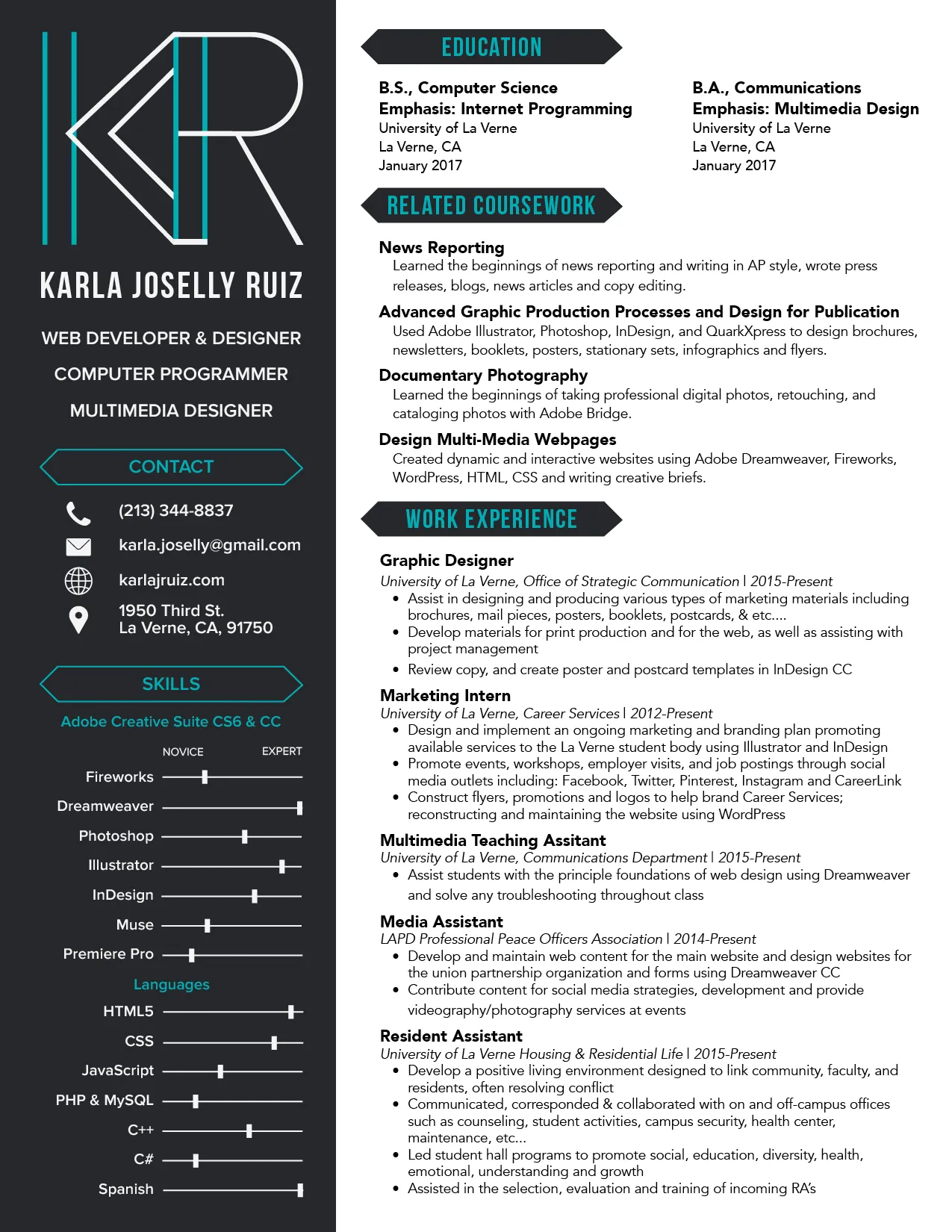
Choose a professional and readable font, such as Times New Roman, Arial, Calibri, or Helvetica. Keep the font size between 10 and 12 points. Avoid overly decorative or unusual fonts, as they can be difficult to read. Ensure consistency in font and font size throughout the entire cover letter. A clean and readable font makes a positive first impression and shows respect for the reader’s time. Selecting a font and size that enhances readability helps the hiring manager focus on your content. Remember, the goal is to make your cover letter easy to read, not to make it visually distracting.
Margins and Spacing
Use standard 1-inch margins on all sides of your cover letter. Maintain consistent spacing between paragraphs and sections, typically using single or 1.15 line spacing. Proper margins and spacing create a clean and organized appearance, making your letter easy to read. Ensure your content is well-balanced on the page, with adequate white space to avoid a cluttered look. Proper spacing improves readability. A well-formatted cover letter is a sign of professionalism and attention to detail, which will positively impact the hiring manager. ResumeHelp can also give you tips on how to ensure proper spacing for your letter.
Length
Keep your cover letter concise, typically limited to one page. Hiring managers often have limited time, so it is essential to convey your message efficiently. Focus on the most relevant information and avoid unnecessary details. Each paragraph should provide value and contribute to your overall message. Ensure your letter is well-structured and easy to read, highlighting your key qualifications and enthusiasm for the role. A one-page cover letter shows respect for the recruiter’s time and helps keep them engaged. ResumeHelp recommends sticking to a single-page format.
Cover Letter Tips
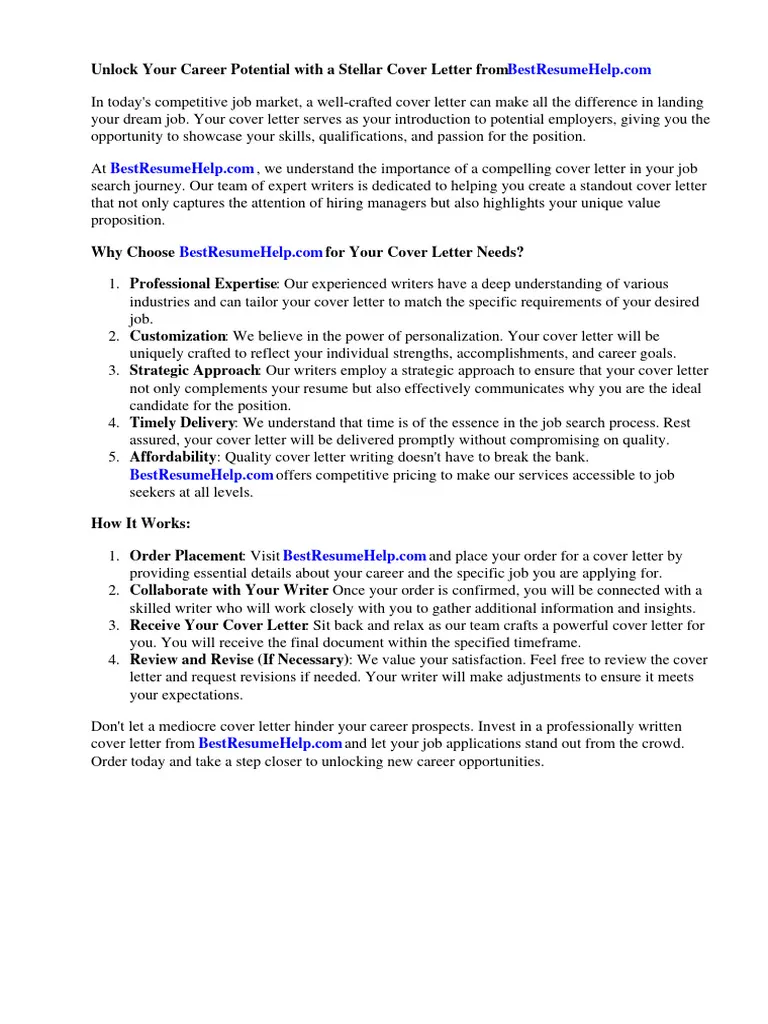
To create a compelling cover letter, incorporate several essential tips. Highlight your relevant skills and experience, quantifying your accomplishments whenever possible. Tailor each letter to the specific job and company, showcasing your understanding of their needs and demonstrating your interest. Proofread and edit your letter meticulously to eliminate any typos or grammatical errors. By following these tips, you will create a professional cover letter that effectively showcases your qualifications and increases your chances of landing an interview. ResumeHelp provides valuable advice.
Highlight Relevant Skills and Experience
Focus on skills and experiences most relevant to the job description. Carefully review the job requirements and tailor your cover letter to address them specifically. Highlight skills, experiences, and qualifications that align with the employer’s needs. Use keywords from the job description to demonstrate that you are a good fit for the role. This targeted approach shows that you understand the job’s expectations and that you’ve prepared a thoughtful application. By emphasizing relevant information, you increase your chances of capturing the hiring manager’s attention and securing an interview. Using keywords also ensures that your application passes through applicant tracking systems (ATS). ResumeHelp can help you understand which skills to use in the letter.
Quantify Accomplishments
Whenever possible, quantify your accomplishments with numbers and data. Instead of saying “Improved customer service,” state “Improved customer service scores by 20%.” Quantifying your achievements provides concrete evidence of your success and demonstrates your ability to deliver results. Use metrics, percentages, and specific figures to showcase your contributions. This evidence offers a clear understanding of your impact and helps the hiring manager assess your value to the company. Quantifiable achievements are significantly more compelling than general statements. It adds credibility. ResumeHelp helps show you ways you can quantify your skills and experience.
Tailor Each Letter
Customize your cover letter for each job application. Research the company and the specific role. Understand the requirements and tailor your letter to address them directly. Highlight the skills and experiences that align with the employer’s needs. Avoid using generic templates; instead, personalize your letter to showcase your understanding of the company and the role. Tailoring your letter demonstrates that you’ve taken the time to understand the opportunity and are genuinely interested. This personalization increases the likelihood that your application will stand out, as the hiring manager will recognize your genuine interest. ResumeHelp can help you find the right words to make your cover letter personal.
Proofread and Edit
Always proofread and edit your cover letter meticulously before submitting it. Typos, grammatical errors, and inconsistencies can undermine your professionalism and create a negative impression. Carefully review your letter for spelling mistakes, grammatical errors, and punctuation issues. Ensure that your content is clear, concise, and error-free. Consider having a friend or colleague review your letter. A well-proofread cover letter demonstrates your attention to detail and professionalism, increasing your credibility. Reviewing the letter is key to ensure your application is as strong as possible. ResumeHelp also provides tools to proofread.
Common Cover Letter Mistakes
Avoid common cover letter mistakes. Using generic content, making typos or grammatical errors, showing a lack of enthusiasm, and ignoring the job description can significantly decrease your chances of success. By understanding these pitfalls, you can create a cover letter that effectively highlights your qualifications and makes a positive impression on the hiring manager. ResumeHelp can guide you on how to create a strong cover letter and avoid the common errors.
Generic Content
Avoid using generic, mass-produced cover letters. Personalize each letter to the specific job and company. Tailor your content to address the requirements of the role and to showcase your understanding of the company’s needs. Generic content shows a lack of effort and may give the impression you are not genuinely interested in the opportunity. A personalized cover letter, on the other hand, demonstrates that you’ve taken the time to understand the role and have a genuine interest in joining the organization. Use your cover letter to highlight why you’re a good fit for the role, and what you can bring to the table. Generic content usually fails to create a connection with the hiring manager.
Typos and Grammatical Errors
Always proofread your cover letter carefully. Typos and grammatical errors undermine your professionalism and can make a negative impression on the hiring manager. Review your letter for spelling mistakes, punctuation errors, and grammatical issues. Consider using a grammar checker or asking a friend or colleague to proofread your letter. Errors suggest a lack of attention to detail, which may affect your credibility. A well-proofread cover letter demonstrates professionalism and attention to detail, increasing your chances of a successful job search. Take the time to proofread multiple times before submitting your letter, and make sure you’re using correct grammar, punctuation and spelling.
Lack of Enthusiasm
Express genuine enthusiasm for the role and the company. Show your passion and excitement for the opportunity. Avoid using a monotone or uninspired tone; let your personality shine through your writing. Clearly articulate why you are interested in the role and what you are looking forward to. A lack of enthusiasm can make your cover letter feel impersonal, while a passionate, engaging tone will attract the hiring manager’s attention. Expressing your excitement creates a positive impression and demonstrates your commitment to the role. This can improve your odds of being called for an interview. Express your enthusiasm and demonstrate your desire to be considered for the role.
Ignoring the Job Description
Carefully review the job description. Tailor your cover letter to address the specific requirements and keywords mentioned in the job posting. Ignoring the job description is a common mistake and can make it appear that you have not carefully read the requirements. Highlight your skills, experience, and qualifications that align with the employer’s needs. Using keywords from the job description helps demonstrate you are a good fit for the role. Align your cover letter with the company’s needs and demonstrate your ability to meet their expectations. The goal is to prove you can fulfill the requirements. ResumeHelp can show you how to address the job description.
ResumeHelp Cover Letter Resources
ResumeHelp offers extensive resources to help you write a compelling cover letter. This includes cover letter templates, examples, and writing guides. Using these resources can help you create a professional cover letter that effectively showcases your qualifications and increases your chances of landing an interview. ResumeHelp provides tools to customize your letter and ensure it meets industry standards. You can access expert advice and tips to improve your job application. Utilize ResumeHelp’s resources to create a cover letter that will stand out.
In conclusion, a well-crafted cover letter is essential for any job application. It allows you to introduce yourself, highlight your qualifications, and express your enthusiasm for the role. Use the tips and resources provided in this guide to create a cover letter that effectively showcases your skills and experience. By following these guidelines, you can increase your chances of getting noticed and securing an interview. Remember to tailor your letter to each specific job, proofread carefully, and demonstrate your passion for the opportunity. ResumeHelp can help you every step of the way, helping you achieve job search success.
